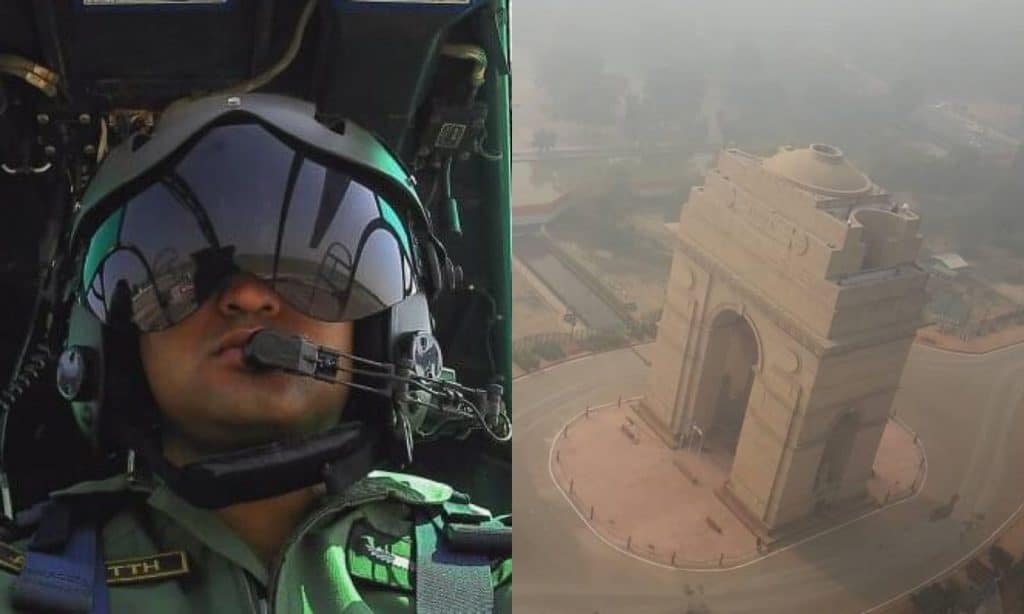
Twelve days after his Army Rudra helicopter crashed, the body of Lt Col Abheet Singh Batth was recovered from the wreck at the depth of nearly 80 meters in the Ranjit Sagar Dam lake on the border of Punjab and Jammu & Kashmir. The body of his co-pilot, 26-year-old Capt. Jayant Joshi, is yet to be recovered.
Lt Col Batth, originally from Amritsar, Punjab, is survived by his wife and young son.
The Rudra — an armed version of HAL’s Dhruv helicopter from the Army’s 254 Squadron — was involved in a low level training flight over the artificial lake near Pathankot when it crashed into the water on the morning of August 3. A strenuous effort to locate the pilots and the wreckage began immediately, with special forces divers and unmanned underwater vehicles (UUVs) employed to assist in the difficult search. While parts of the wreckage were recovered immediately, the main fuselage was located nearly ten days after the crash at a depth of 80 meters in near totally opaque colloidal water.
For the families of the two pilots, it has been a harrowing 12 days. Both families have been in Pathankot, with daily visits to the Ranjit Sagar Dam lake site. The search for the body of Capt. Jayant Joshi, whose mother is a serving nursing officer with the Army in Kolkata, continues, alongside efforts to recover the helicopter’s flight data recorder.
Tragic gloom has engulfed the 254 Squadron based in Pathankot. The August 3 crash was the second crash of a Rudra from the unit this year. On January 25, pilot Lt Col Rishabh Sharma was killed in Rudra crash at the Basohli Cantonement in Kathua near Jammu. While accidents are investigated through detailed courts of inquiry, 254 Squadron’s Commanding Officer could potentially face the glare.
Several safety are said to be under review at the Army Aviation directorate, including shortage of training areas for Rudra units, forcing them to conduct low level ‘nap-of-the-earth’ flying maneouvers over water bodies as in the case of the August 3 flight. The reason for the crash is not known at this time, though the condition of the wreckage suggests, at least prima facie, that it wasn’t a controlled impact.
The Indian Army has bet on the Rudra as a sturdy and reliable gunship, based on the doughty Dhruv that’s in service across the armed forces in sizeable numbers. Army Rudras, sporting the added advantage of being based on a helicopter purpose built for high altitude performance, has been deployed in Ladakh for over a year now conducting close air support readiness drills with troops deployed. You can read about that in this piece:
While the Army is to receive more Rudras from HAL, weaponisation of the platform has remained a stubbornly unresolved issue. We detailed that in this piece here:
The Rudra populates the Army’s baseline gunship fleet. By next year, the Army should begin receiving the first of five Light Combat Helicopters (LCH), another derivative of the Dhruv, but with a compressed airframe sporting tandem seats like a true attack helicopter. LCHs hav also been deployed in Ladakh since the beginning of the current standoff with China. The Army has plans to order up to 114 LCHs, though the current rate of orders inspires nearly no confidence in the support needed for an indigenous project that literally been deployed in an operational theatre before deliveries even begin.
The top rung of the Army’s assault helicopter fleet will be populated with, for starters, six Boeing AH-64E Apache helicopters that should begin arriving in 2022. A scarcely resolved turf war between the Army and IAF over the use of armed helicopters means both services will deploy these aircraft for the foreseeable future.

This is matter of great concern and importance since nation’s security at stake, govt has made some good decisions to improve HAL’s performance in production /timely delivery but still lot is expected, defense /finance ministries should sort out the issues at the earliest for the future of nation…..